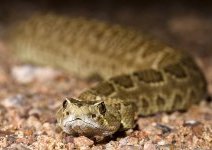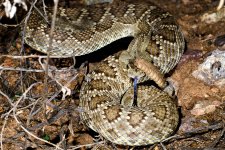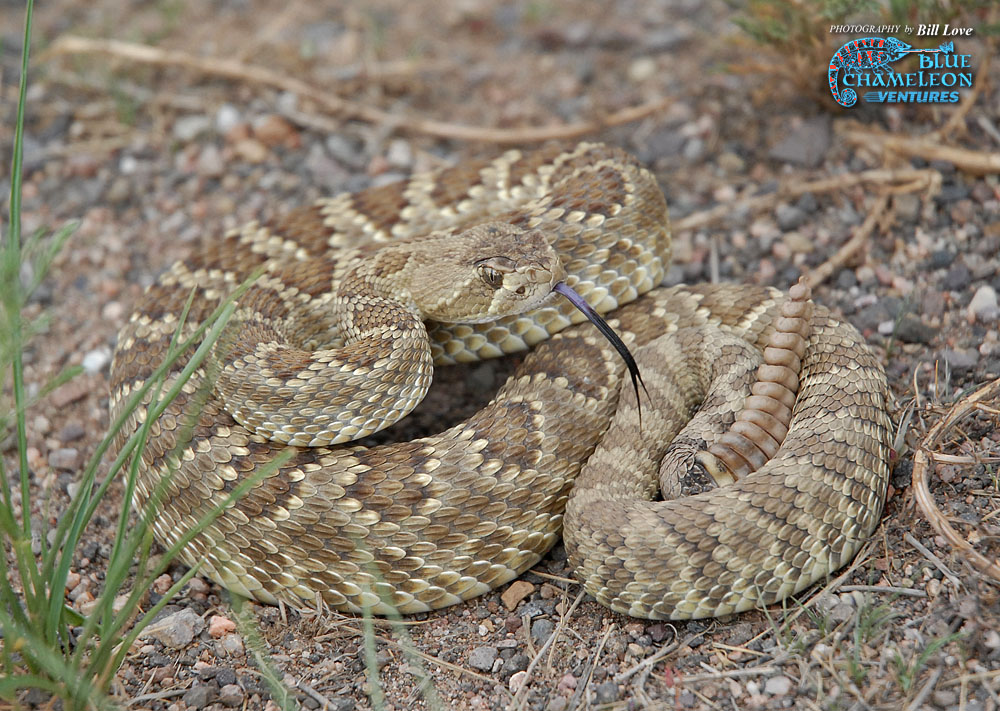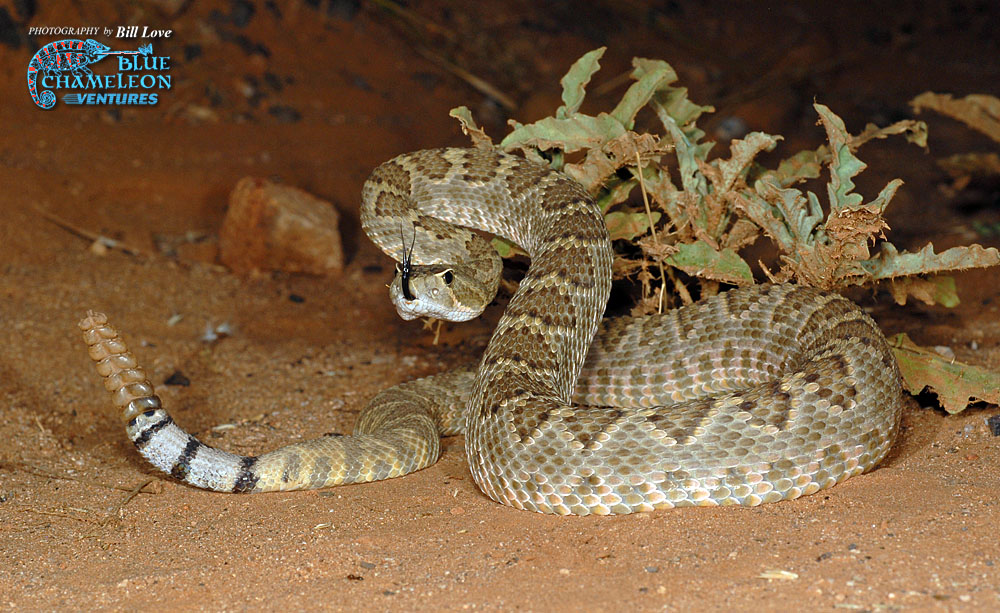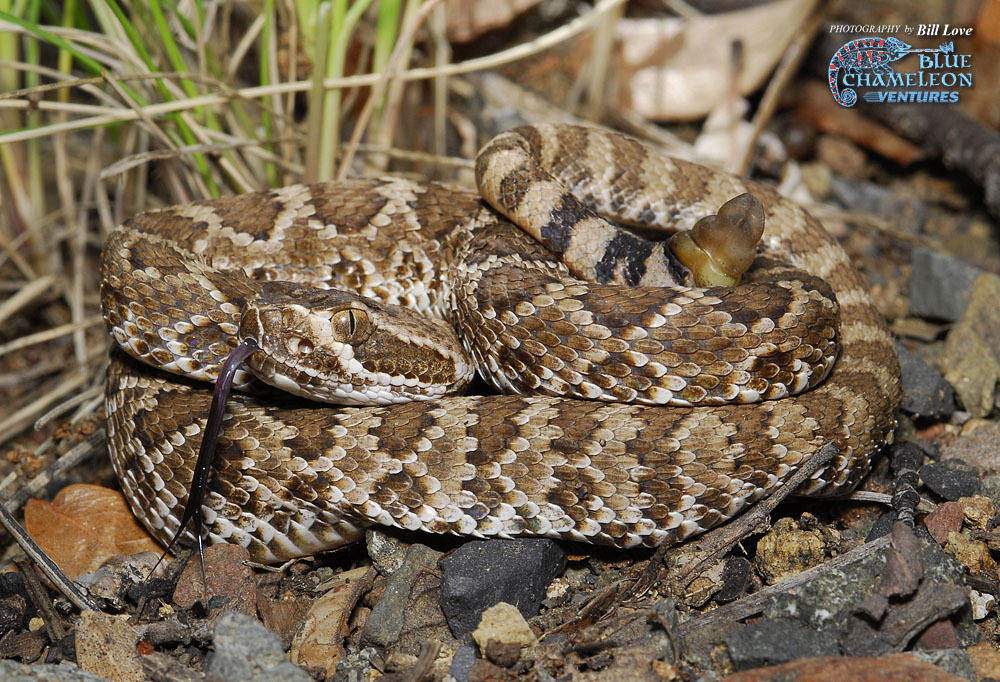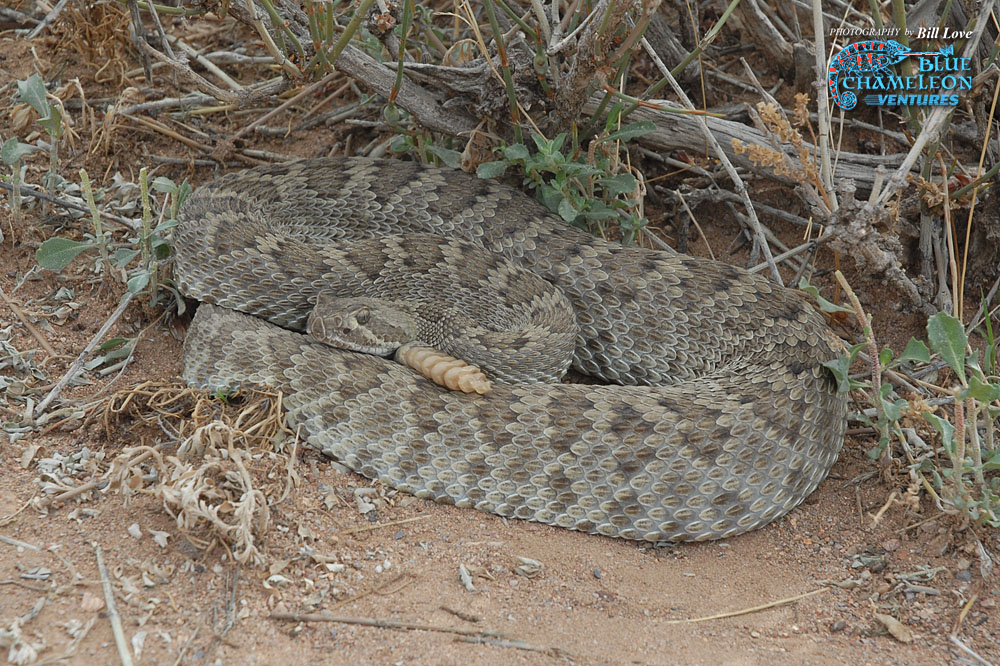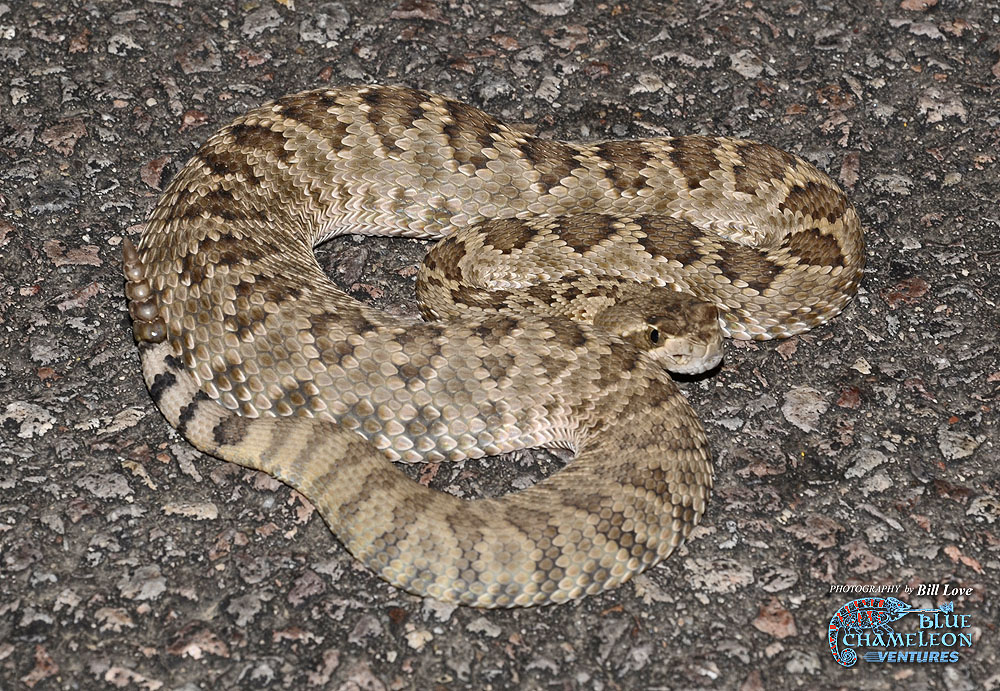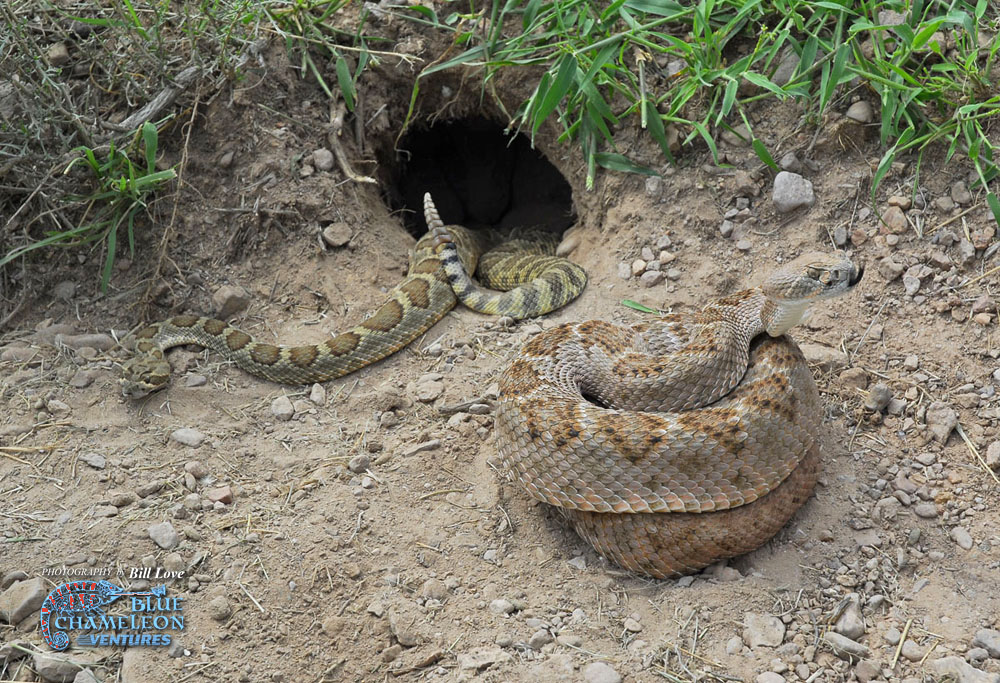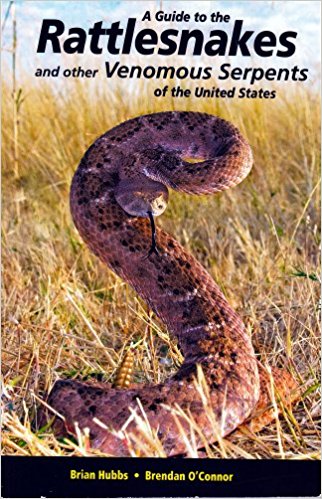| Range: |
 |
| Other Names: |
Mojave Green |
| Subspecies: |
Northern Mojave Rattlesnake Crotalus scutulatus scutulatus |
| Description: |
A large 24"-50" rattlesnake. Can be tan, pale green, olive, or
gray-brown rattlesnake with a series of dark blotches running down the
back. The blotches have dark edges and are uniform brown, dark gray,
or olive-brown centers. A thin, light colored stripe extends back from
the posterior corner of the eye to beyond the corner of the mouth. The
pupils are vertically elliptical and the dorsal scales are keeled. The
neck is slender and the head is broad and triangular. Tail with
contrasting light and dark rings with the light rings usually wider than the black. |
| Similar Species: |
Often confused with Western Diamondbacks, Mojaves have enlarged scales between supraocular scales, usually narrow black tail rings and a white stripe behind the eye extending behind the corner of the mouth. Prairie Rattlesnakes do not have white in the banding of the tail before the rattle. Eastern and Northern Blacktails usually have solid black tails before the rattle and have a dark eye stripe and nose. |
| Venom: |
Medically significant, both neurotoxic and hemotoxic, one of the most toxic rattlesnakes. |
| Habitat: |
It occurs in chihuahuan desertscrubs and semidesert grassland. Found
in relatively level terrain such as mesquite brush, creosote bush, low
valleys, and rolling foothills. Often occurs in dense vegetation.
|
| Behavior: |
It is primarily nocturnal across most of its range in New Mexico. This can be a very dangerous serpent when provoked, and many Mojaves are easily provoked. Some will quickly rattle and strike at any object perceived to be dangerous, so give this rattlesnake a lot of space if you encounter it. |
| Hibernation: |
Hibernates during the cold months. |
| Reproduction: |
Live bearing, gives birth to 2-17 young. Known to hydridize with Prairie Rattlesnakes in parts of Hidalgo County. |
| Diet: |
Feeds on rats, mice, lizards, and birds. |
Authored by: Garth Teitjen

